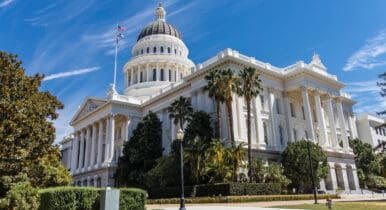How Advocacy Pros Are Building Sustainable Outreach Efforts
The advocacy environment has changed dramatically over the past few months and practitioners are scrambling to map out long-term plans at a time when nothing seems particularly predictable.
But there are tactics and tools that government affairs pros say can help advocacy groups find consistency within the chaos. Here are some tips from practitioners on how to build sustainable advocacy efforts in today’s political climate:
Embrace the News Cycle
The news cycle in Washington is moving faster than ever. For advocacy groups, that means having to stay on top of minute-by-minute developments to ensure that they’re reaching the right players at the right times, Joe Corbe, the president and CEO of 1631 Digital, told C&E during a recent webinar.
“Let’s face it. Everything is upside down right now,” Corbe said. “The typical way that advocacy groups would create outreach strategies is night and day to what it was just a year ago.”
“We’re a little bit more on the ball on a daily basis, as opposed to back in the day, you could create an annual strategy and sort of map it out,” he added. “Then it went to quarterly, then it went to just when Congress is in, to what’s happening this week. Now it’s literally all hands on deck everyday.”
Corbe said that his firm relies heavily on media listening tools to help map out strategies and “create processes to reach the right people at any given time.”
Have Your Messengers Ready to Go
Given the rapid pace of the news cycle, Mandi Boyce, the associate director of public affairs at Echo Canyon Consulting, recommends “proactively building out a base of grassroots advocates.”
“You kind of want to seek out and find those people – whether they’re grassroots, just everyday people or kind of grasstops leaders in the community – that can speak on that issue before you need them,” Boyce said during the webinar. “That way you can call on them immediately when something comes up at the city council or at the legislature or at the corporation commission, etcetera.”
That list of advocates doesn’t have to be huge, Boyce said. In a smaller community, it could be just a few individuals. Still, she added, it’s important to “communicate with them regularly enough that they remember you’re there and that they signed up for this.
“That way, for the long term, they’re ready to be called on when you need them,” Boyce said.
Texting Isn’t Dead
Consultants and campaign pros are more concerned than ever that frequent texting is burning out supporters and losing its effectiveness. But Corbe said that there’s still a place for text outreach, especially when it comes to reaching your base – especially in a pinch.
“Things like text alerts are a lot more important these days because things are popping up that you have to make your voice heard,” he said. “And that’s 100 percent viewability in most cases. Everybody looks at their cellphone.”
“If you’re rallying up the troops, they will respond,” Corbe added. “It’s the outlier of the people you don’t know.”
Boyce said it’s also important to consider other platforms based on who exactly your advocacy efforts are trying to reach. LinkedIn, for example, is a great platform for reaching the professionals who can help drive your business goals forward. When it comes to politics, it’s still vital to be “plugged in” to X.
“I think every platform has its own flavor and its best use,” Boyce said. “You want to go client by client and issue by issue.”


